A Winter in Malta #4 - The Megalithic Temples
Hey, fellow Steemians!
After we had crossed Blue Grotto off the list, our next stop were the megalithic temples of Mnajdra and Ħaġar Qim!
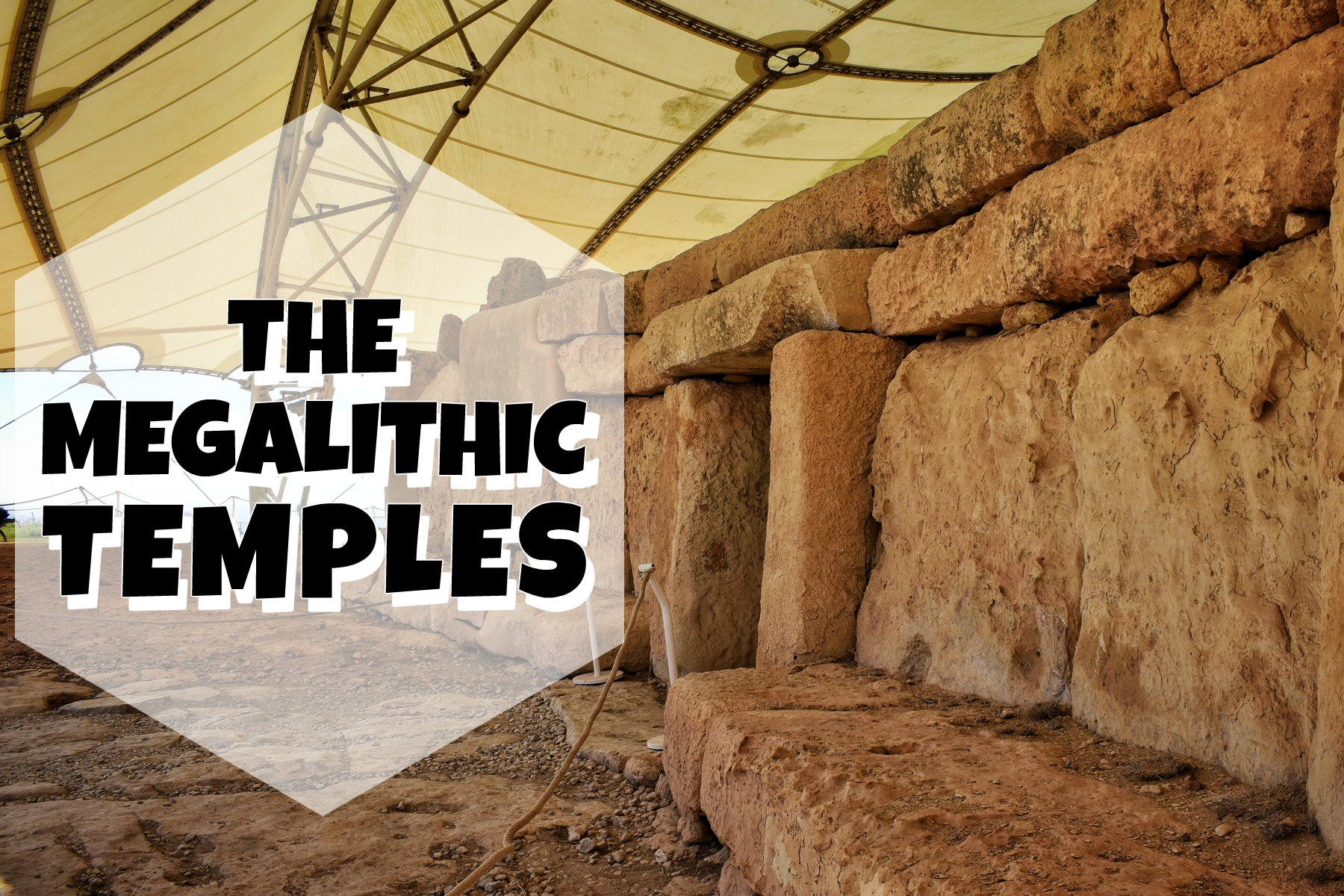
Visiting Grotto and temples in one trip is very convenient since they are only a couple of kilometers apart. You can either walk (there’s a sidewalk next to the road) or take a bus. We did the former and got to our destination pretty quickly. On our way, we just couldn’t keep our eyes off the endless blue sea that dominated the horizon.
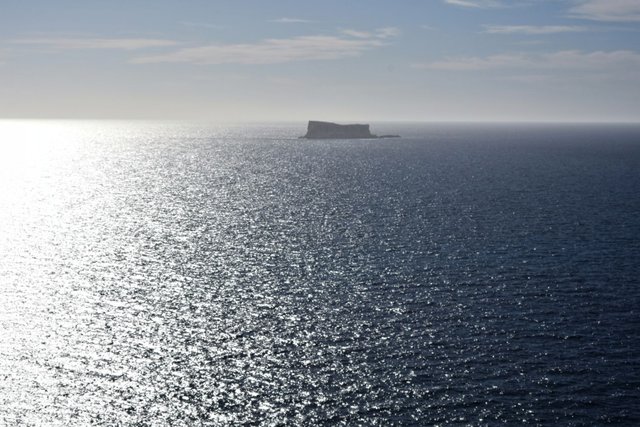
As we got there, we went straight to the ticket booth and got our tickets which set us back €10 each. The two temples belong to the same complex and one ticket provides entrance to both. There are also audio guides in several languages but the employee whom we bought the tickets from advised us not to spend money on it as everything is written down on info tables throughout the site (but only in English, so the audio guides may come as useful for those who aren’t very good with it).
Before proceeding to the temples, we visited the small museum which explains a little about the history of the entire area and contains some artifacts on display. There’s also a small theater that shows a short 5d animated movie about the temples which is a nice touch. We liked it very much!
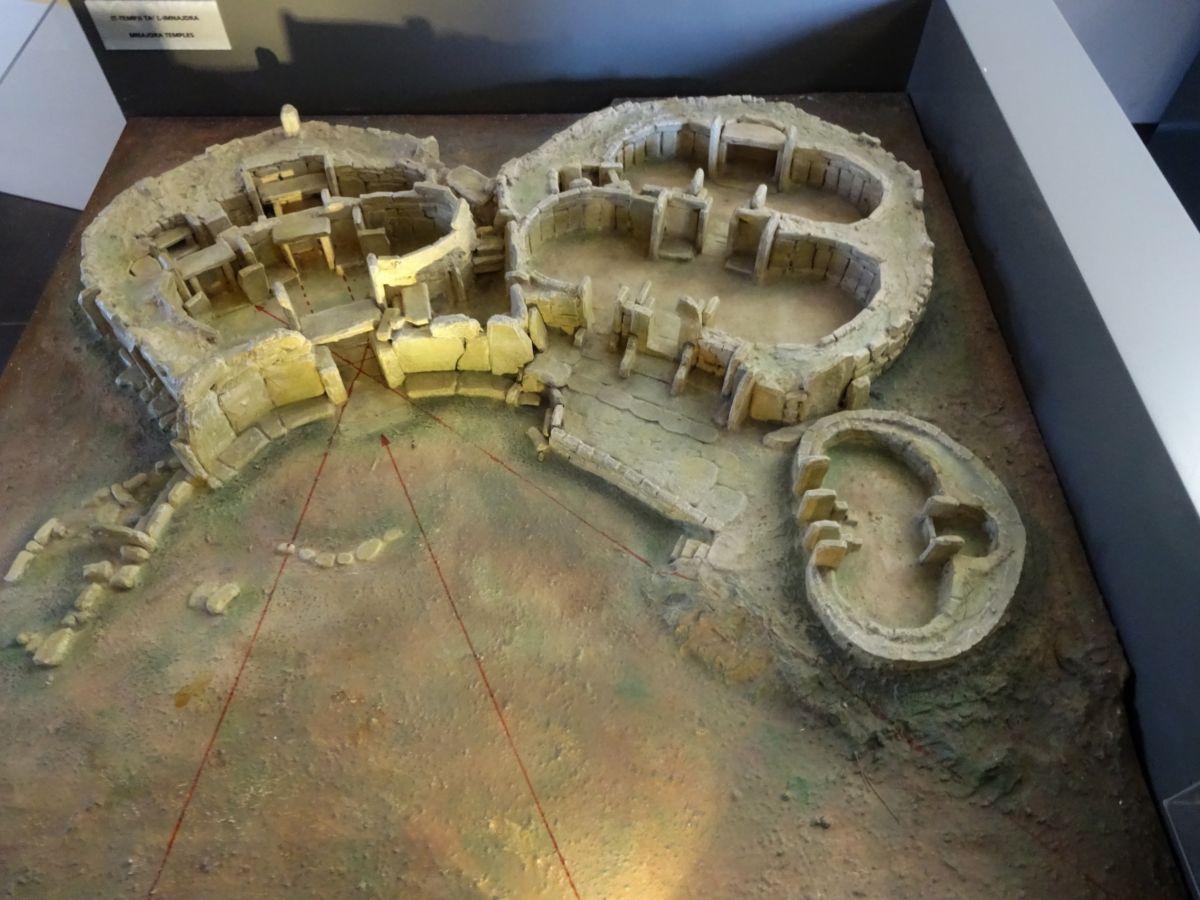
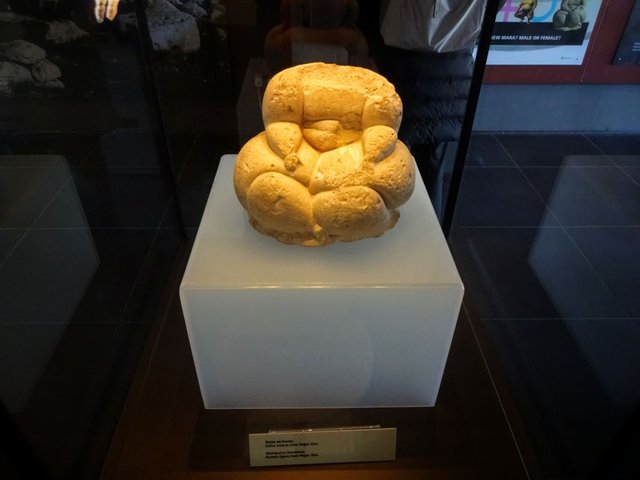
We learned the temples were built around 3600 B.C. placing them among the oldest religious sites in the world! Just to put it into perspective, the oldest pyramid in the world was built around 2600 B.C. which is 1000 years later than these buildings. That alone is pretty impressive!
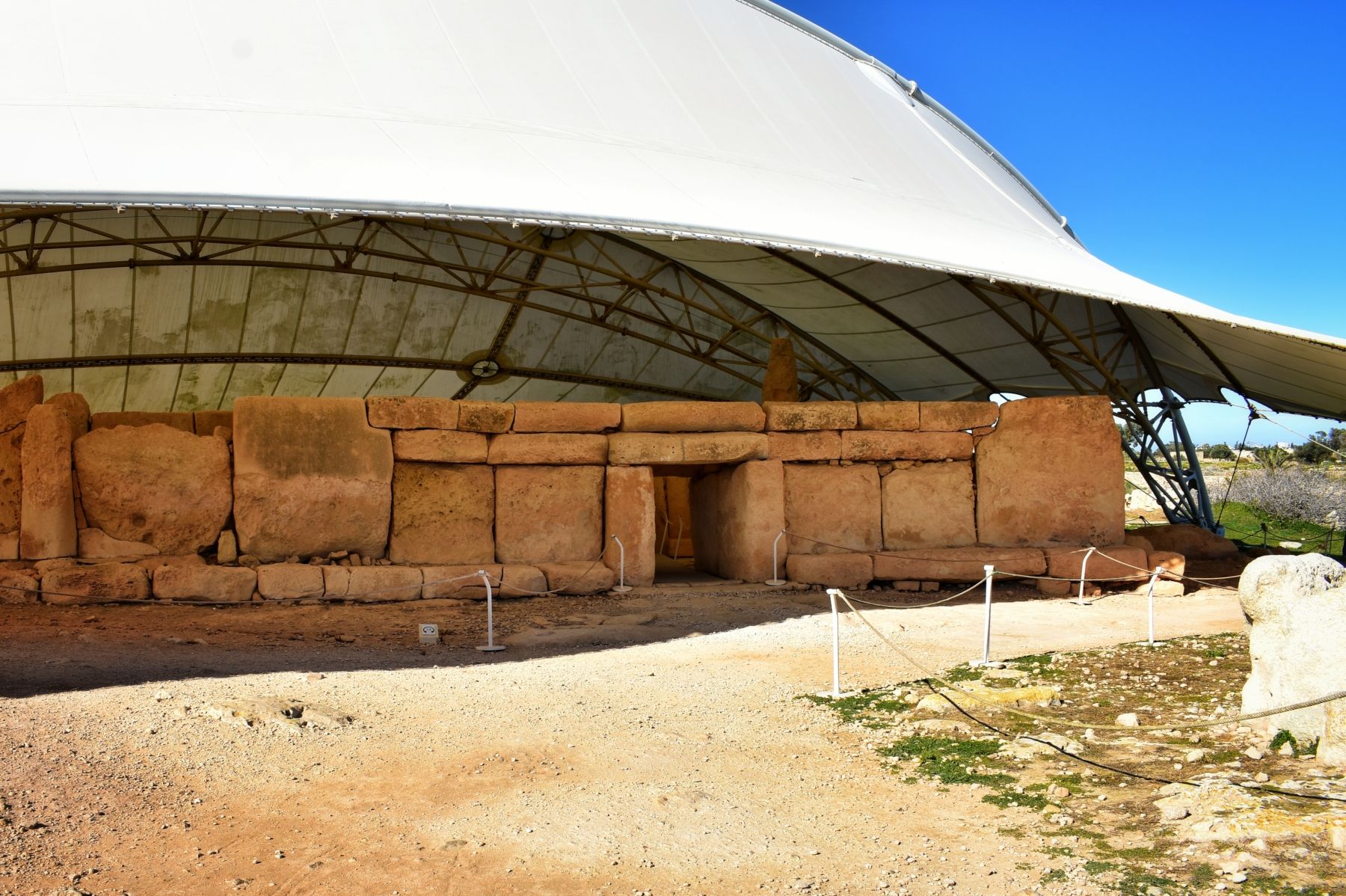
First temple we visited was Ħaġar Qim. The first and most interesting thing we noticed about it was the entrance. Rectangle shaped opening made from enormous stone blocks was the only way leading inside. The horizontal blocks were still in place, almost intact!
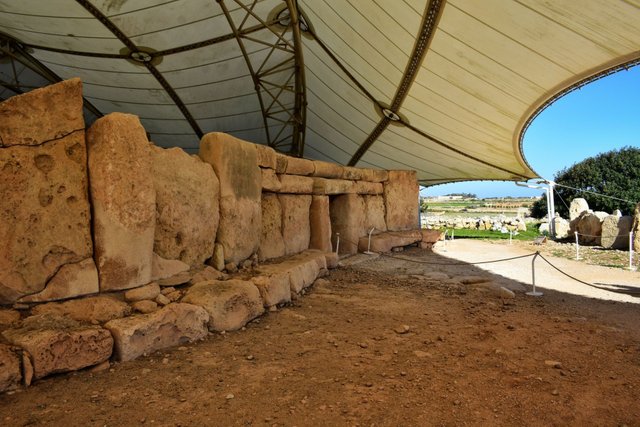
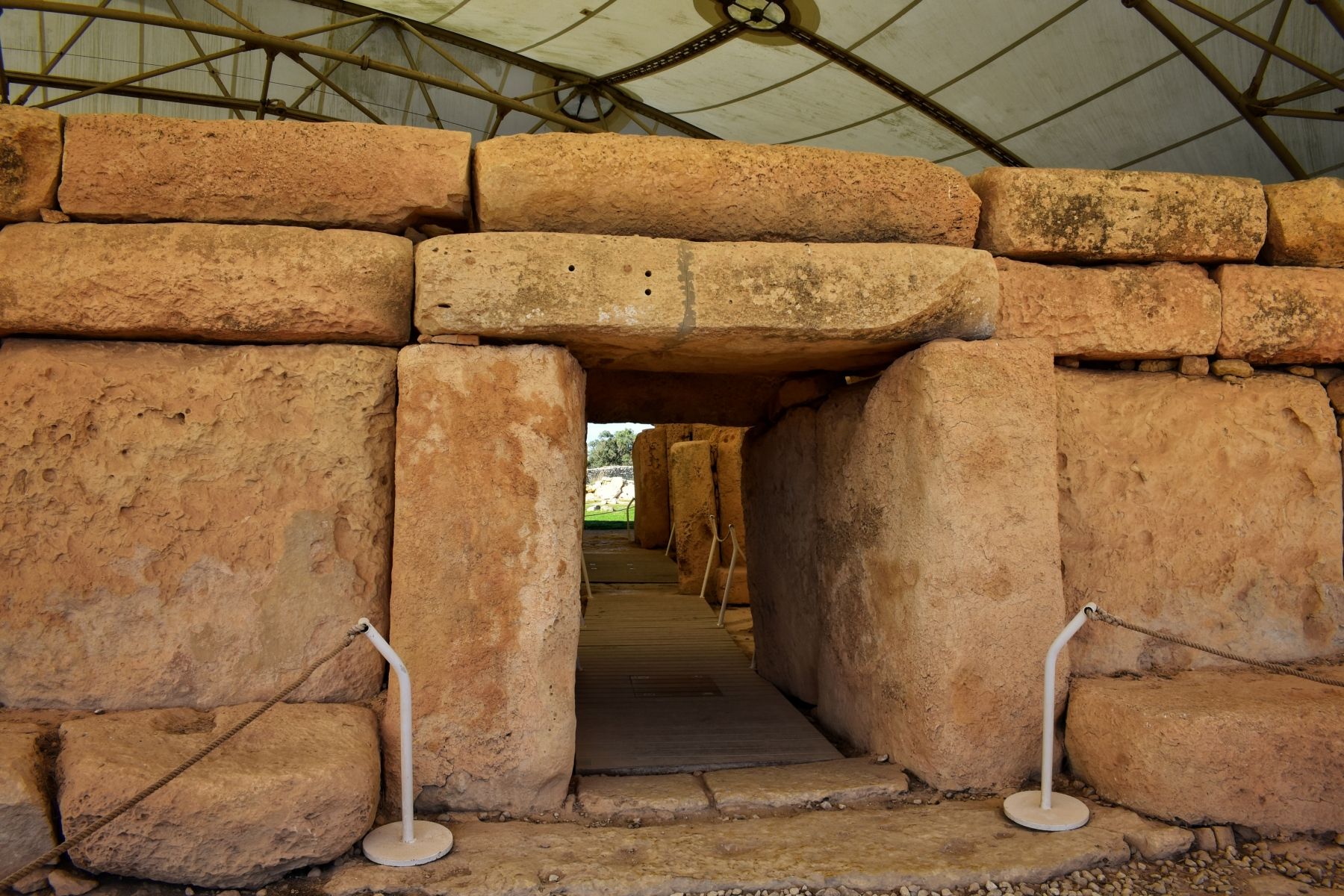
How these blocks were moved and placed on top of each other remains a mystery.
An interesting fact is that no human bones were found in and around temples, just the animals’ which means they might have been used as a sacrifice in religious rituals.
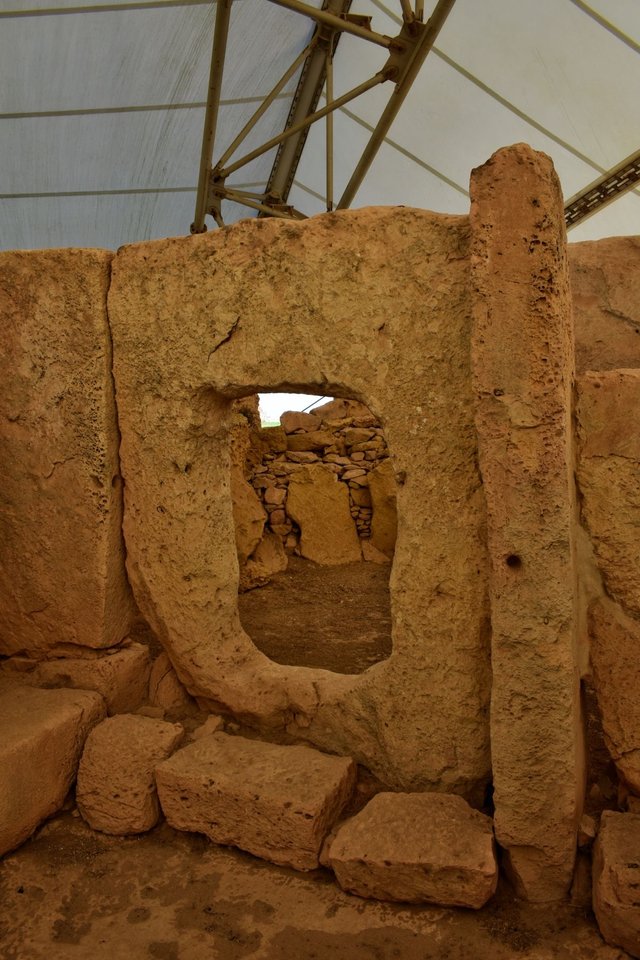
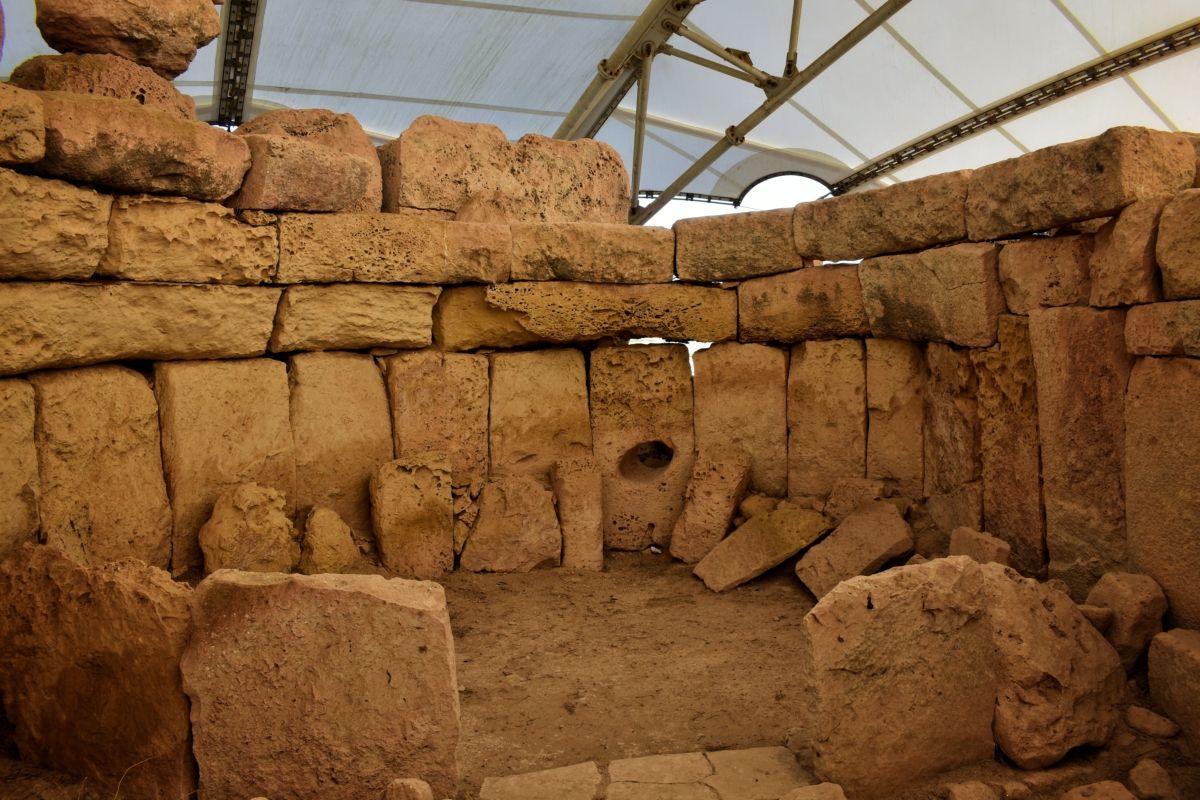
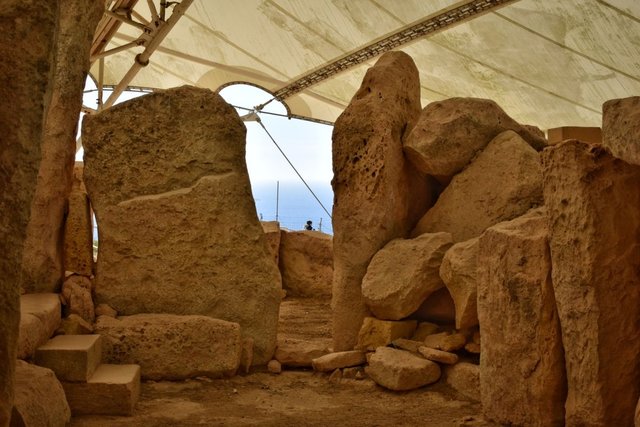
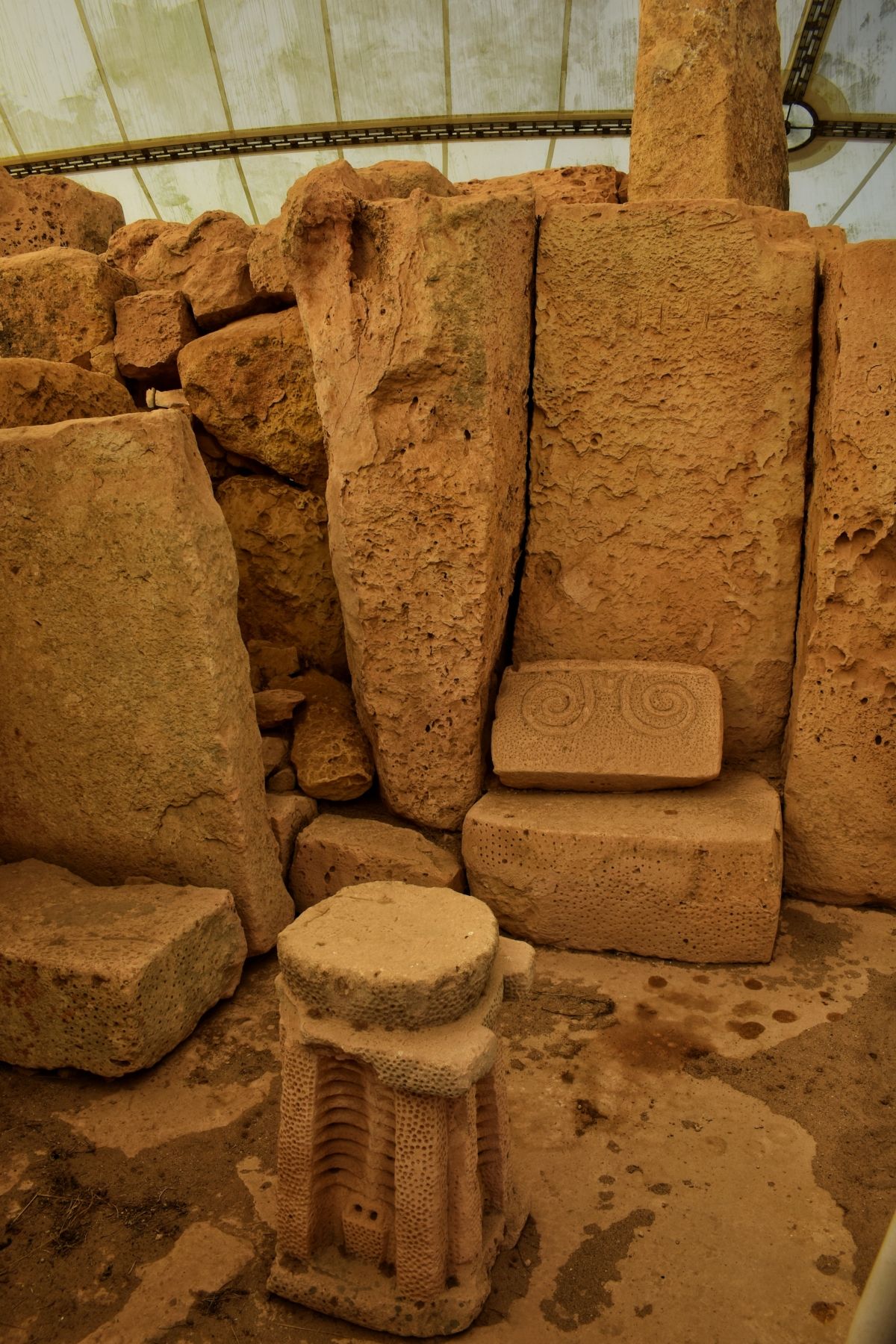
We took a moment to contemplate about the stones and their age, how they continuously stood witness to the generations that passed on this small island. Human lives are short, yet they are more than capable of leaving awe-inspiring evidence of their existence behind. These temples may not look so spectacular to us now, but they were built using techniques vastly inferior to those today. And they managed to withstand 5000 years. Certainly, more than their masons would’ve hoped to. What will happen in 5000 years from now and will anything the mankind had built endure such a long time? Nobody knows. It’s just as mysterious to us now as it was to people who walked these lands 5 millennia ago.
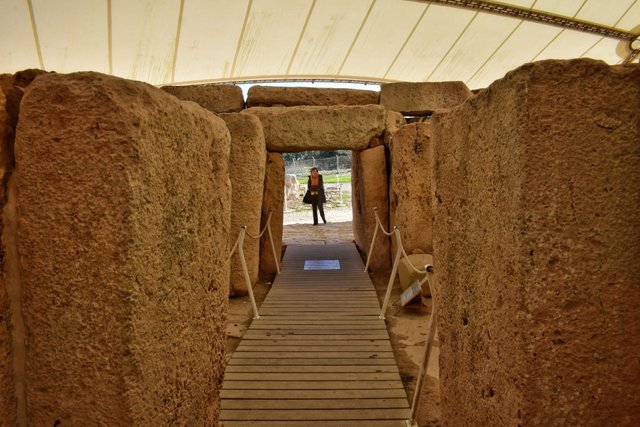
The other temple, Mnajdra, was equally impressive. It had even more chambers we could enter and investigate.
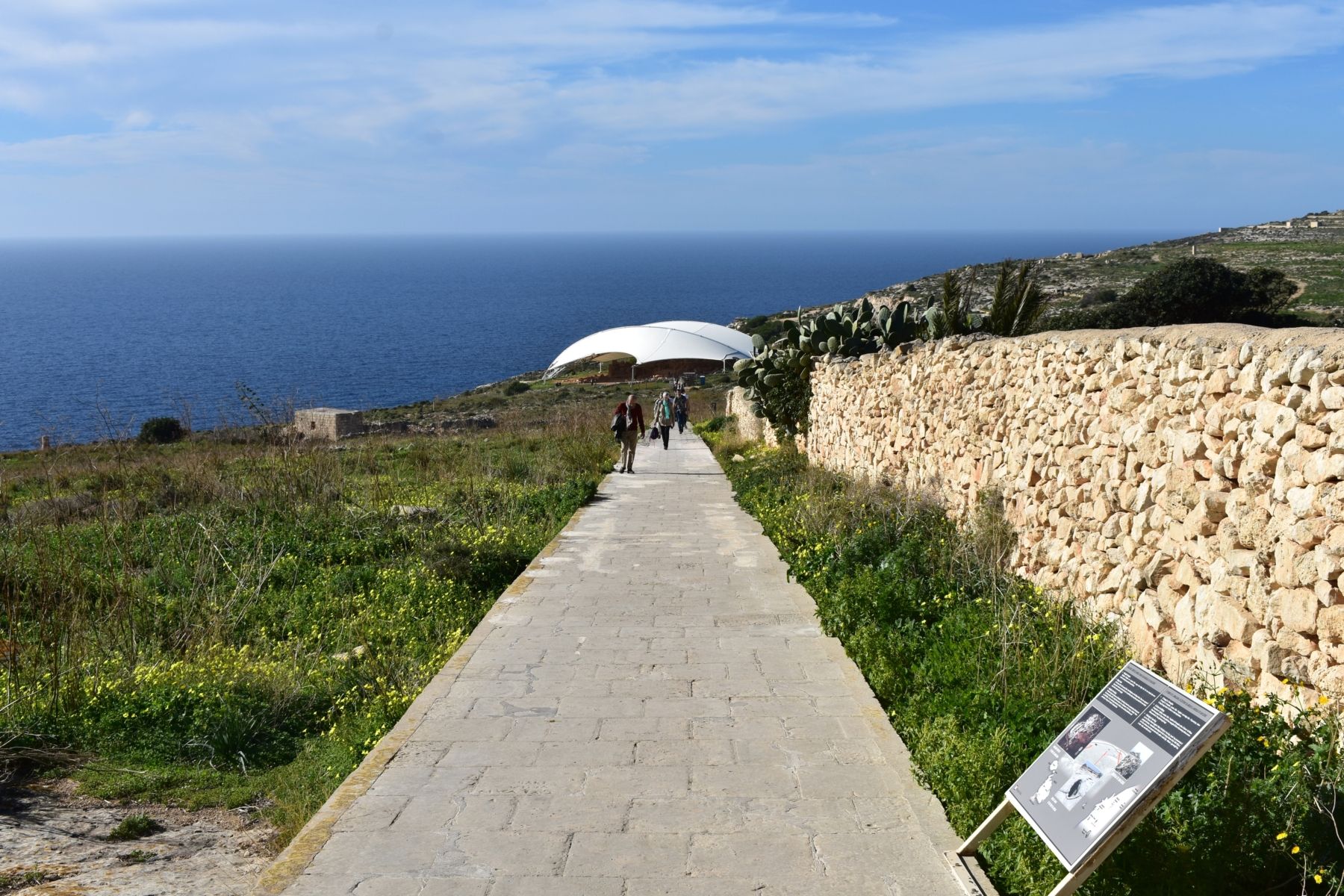
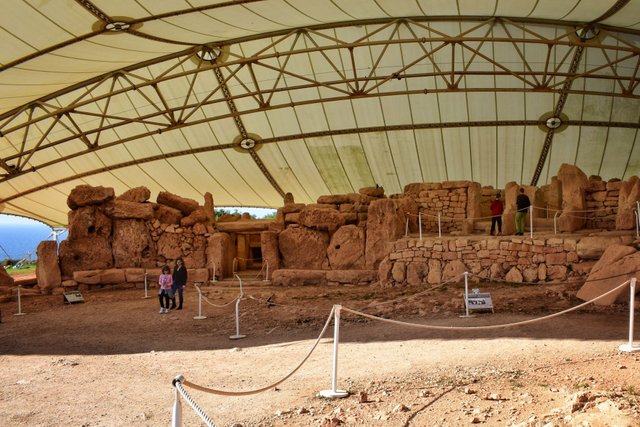
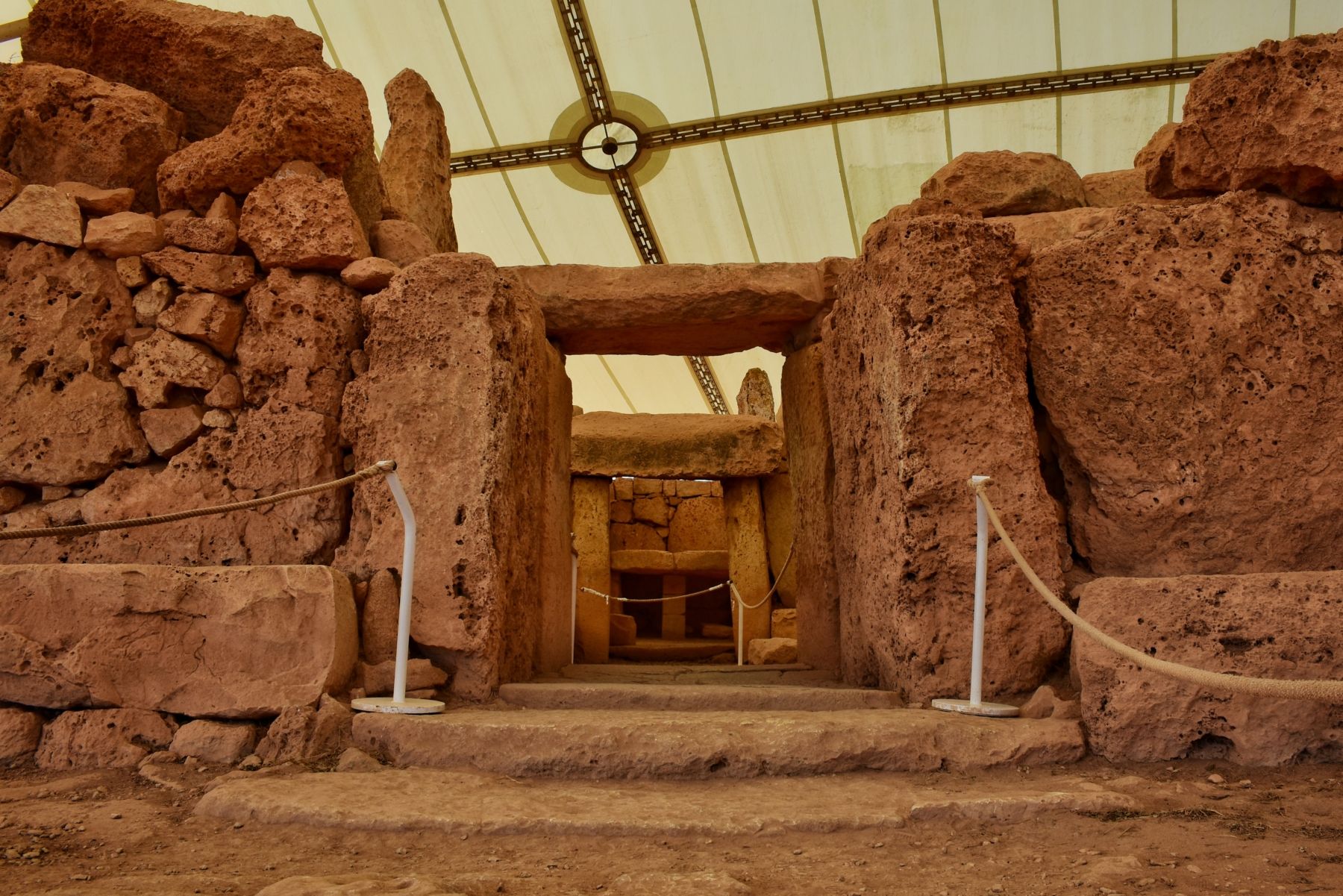
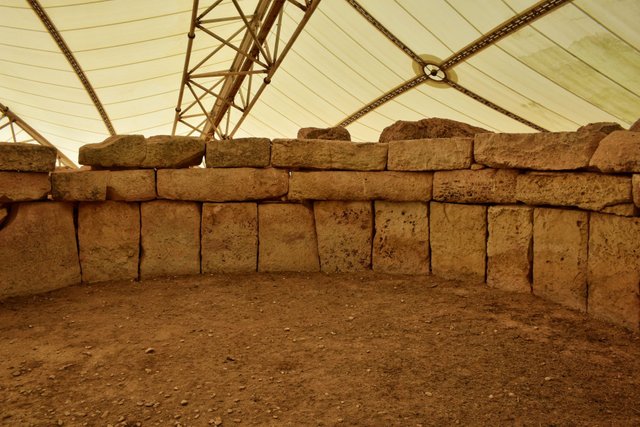
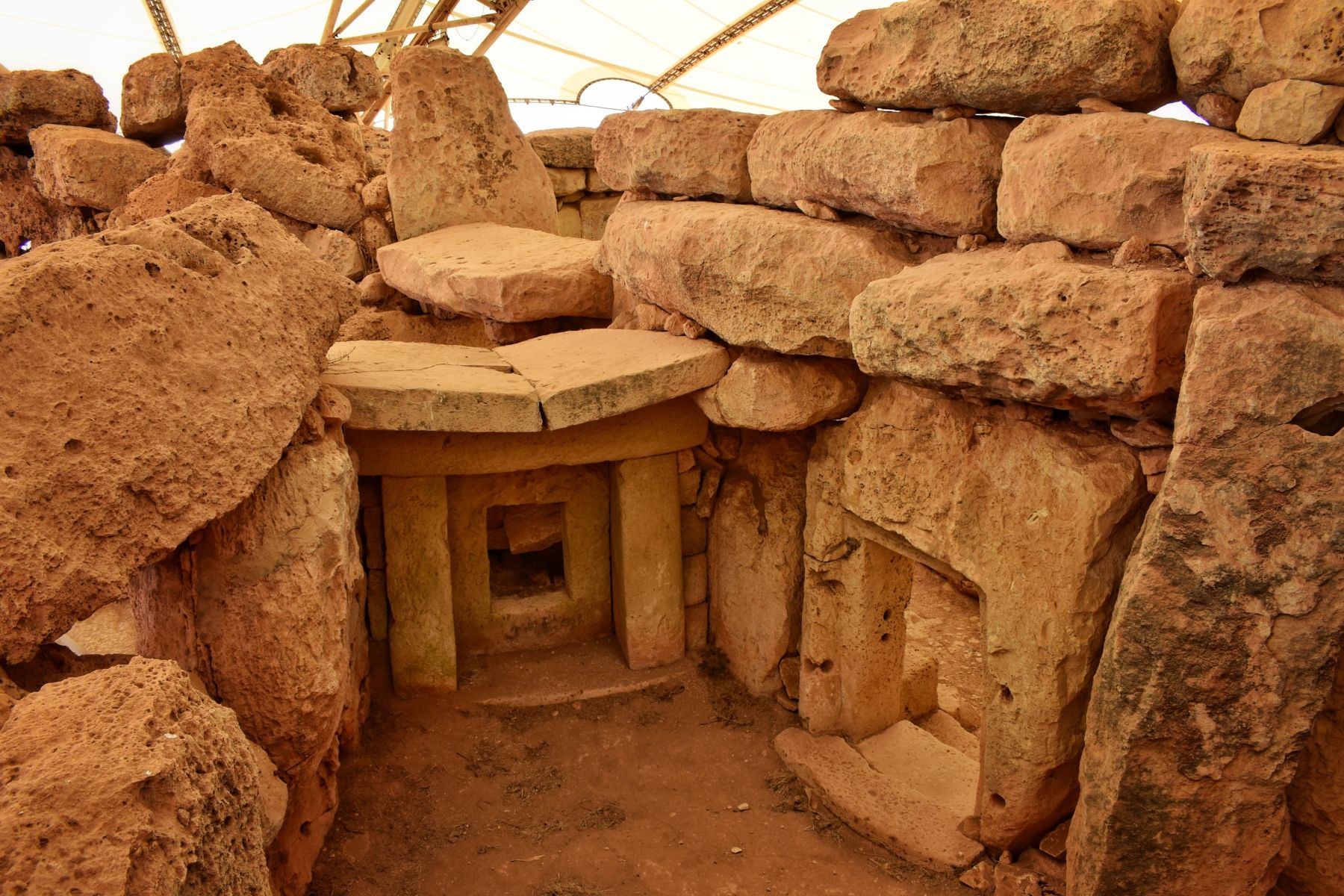
Taking a closer look at the stones showed us how time had withered away their volume and left scars on the limestone.
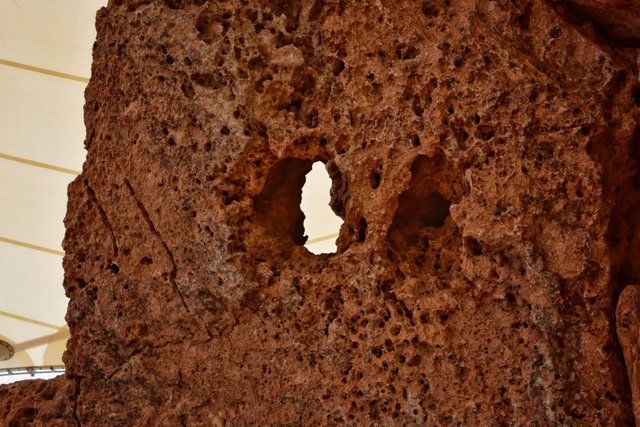
A large tent serves as a protection but it still may not be enough to preserve this wonder for future generations. In fact, there are numerous photos showing the comparison between the temples during the excavation and present time. Having been covered with sand and earth, the stones were much better preserved. Now, they are exposed to wind and, until recently, sun and rain. All of that led to damage that cannot be undone. Let’s hope they come up with more ideas on how to protect them…
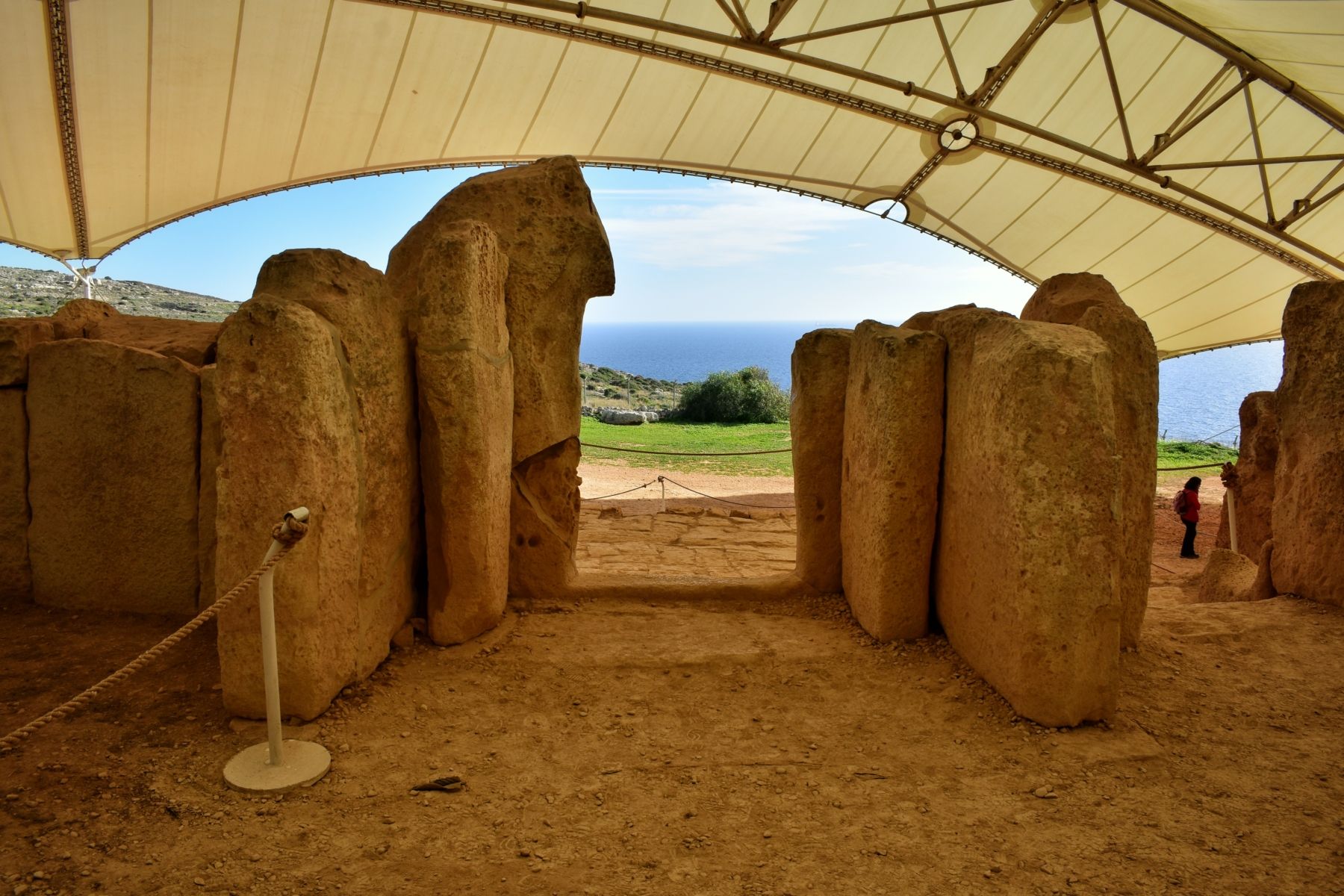
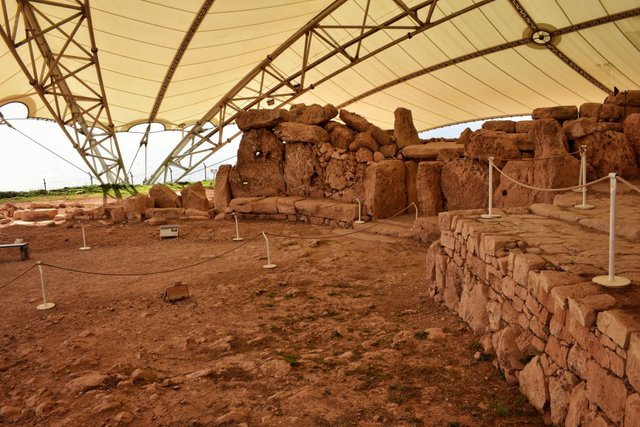
When we finished our visit to the temples, we went on a short hike to one of the medieval watchtowers standing guard near the coast. It was fun getting close to one of the towers as we have seen a couple of them from the bus.
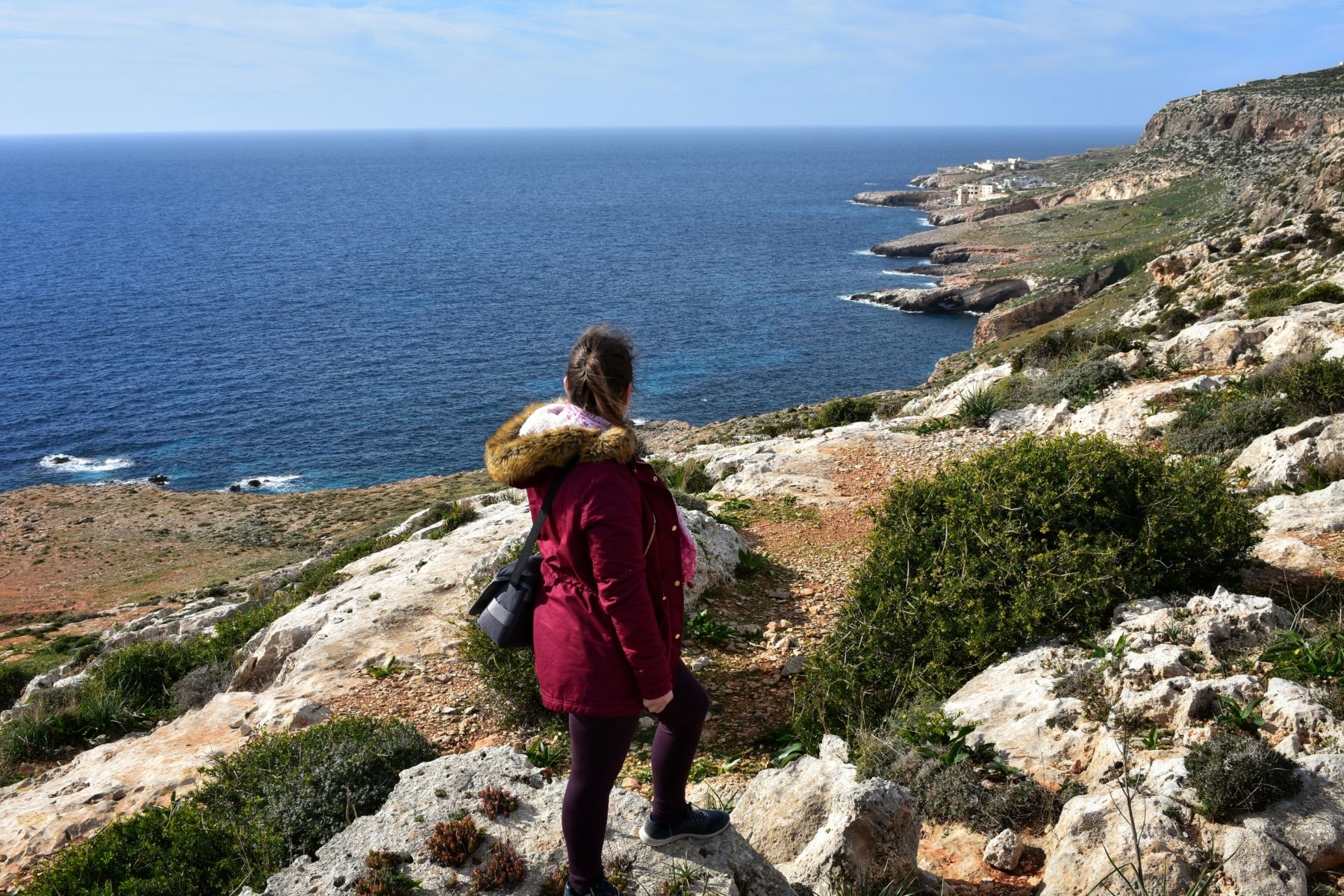
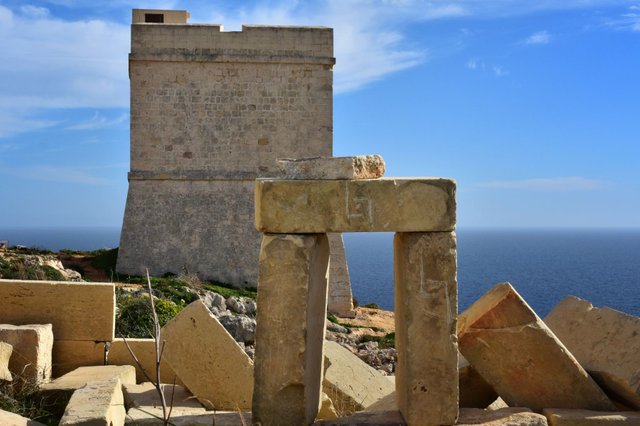
These outposts were built by the Order of St. John in order to better protect the island and alarm the people in case of invasion. Usually, a fire would be lit from one of the towers as soon as the invading ship was spotted. The guards from neighboring towers would see the fire and light one themselves creating a chain until everyone on the island was aware of the imminent threat.
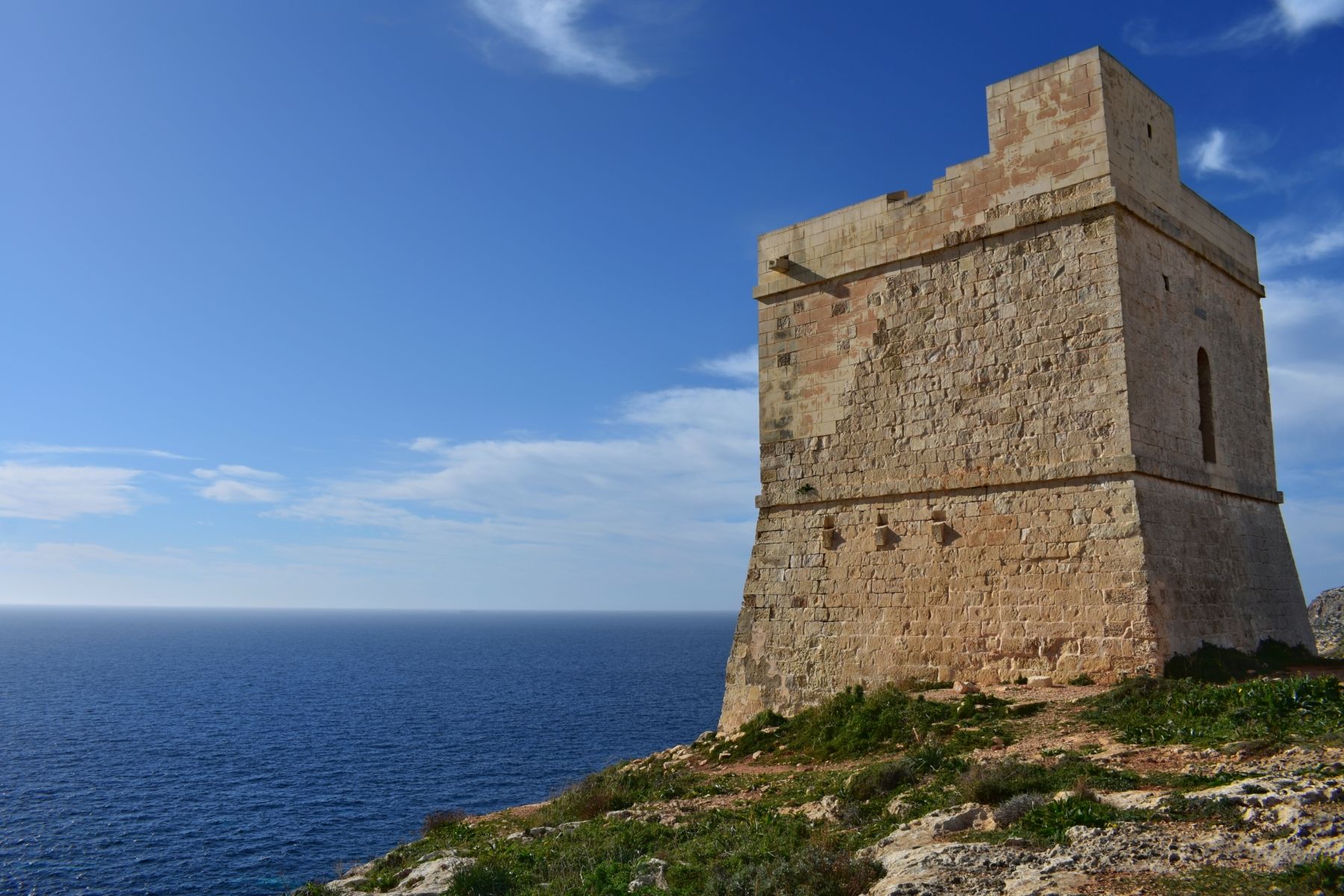
Hope you enjoyed reading! Until next time, travelers!
It's amazing traveling dear and I love all photos .
Amazing work do dear thanks for sharing .
Namaste
Thank you, and you're welcome! :)
You 2 are so awesome you always look at my posts. Thanks so much have great day. Your Malta megaliths are way cool thankyou for showing your photos to us.


A gift for you
Thank you, @theladybugsadven :) That sunset is beautiful!
Thanks
Malta it's so beautiful!
The sea is very blue and beautiful! The air must be very light and fresh too! What a lovely day to be out there among ancient ruin and temples.
Those rocks are nicely cut and stacked neatly together years ago! These people must have advanced knowledge on architecture and engineering, probably from UFO technology!!
There should be some underground tunnels too, but people haven't found the entrance yet! I think!
Cheers.
Yes, it's incredible and hard to comprehend but they must've used advanced techniques to lift the rocks. Well, advanced in terms of neolithic period. Amazing, nevertheless!
Congratulations, Your Post Has Been Added To The Steemit Worldmap!
Author link: http://steemitworldmap.com?author=jny.untraveled
Post link: http://steemitworldmap.com?post=a-winter-in-malta-4-the-megalithic-temples
Want to have your post on the map too?